Google Pixel Watch 2: Specs, new Fitbit tools, and everything you need to know
Don't be fooled by its similar look: the Pixel Watch 2 made plenty of vital changes beneath its gorgeous edge-to-edge display.
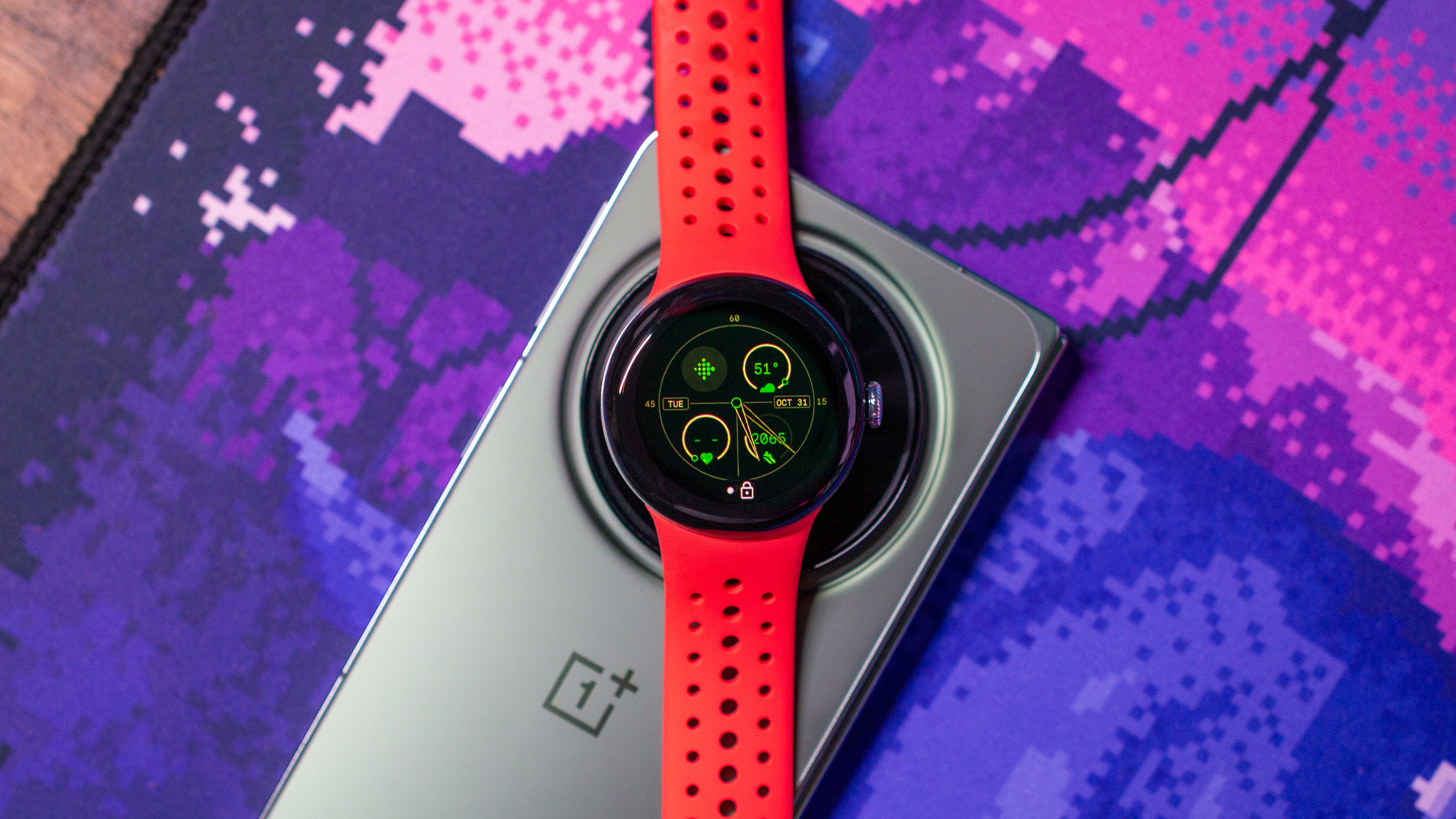
The original Pixel Watch was weighed down by a years-long production process that saddled it with some last-gen touches, undercutting an otherwise high-quality smartwatch with plenty of magical Google touches. Now, the Pixel Watch 2 has arrived with (mostly) the same look while shedding a lot of that baggage.
With a new Snapdragon processor, improved battery life, four new or improved health sensors, and faster charging, the Pixel Watch 2 has made enough changes from the Pixel Watch 1 to help it compete against the best Android watches from Samsung and other brands — as well as against popular fitness brands thanks to its Fitbit Premium link.
You can check out our Pixel Watch 2 review to see our hands-on impressions of the watch. Thus far, it's certainly among our favorites, competing with the Galaxy Watch 6 for the top spot.
Otherwise, here's what you need to know about the Google Pixel Watch 2's design, specs, release date, and more!
Google Pixel Watch 2: Release date and price
Google announced pre-orders for the Pixel Watch 2 on October 4. It officially launches and ships on October 12.
Depending on where you buy the Pixel Watch 2, you'll get one or two years of warranty. Buyers in the United States, Canada, Japan, Singapore, Taiwan, and India get one year of support. The United Kingdom, France, Switzerland, Australia, and the general EEA get two years.
The Google Pixel Watch 2 Wi-Fi ships in one 41mm case size and costs $349.99 in the United States, while starting at £349 in the UK, €399 in Europe, and AU$549 in Australia. For the 4G LTE Pixel Watch 2, you pay $50 extra ($399). You also receive 6 free months of Fitbit Premium (a $60 value) with purchase, so long as you're not already subscribed.
Be an expert in 5 minutes
Get the latest news from Android Central, your trusted companion in the world of Android
Google Pixel Watch 2: Design and display
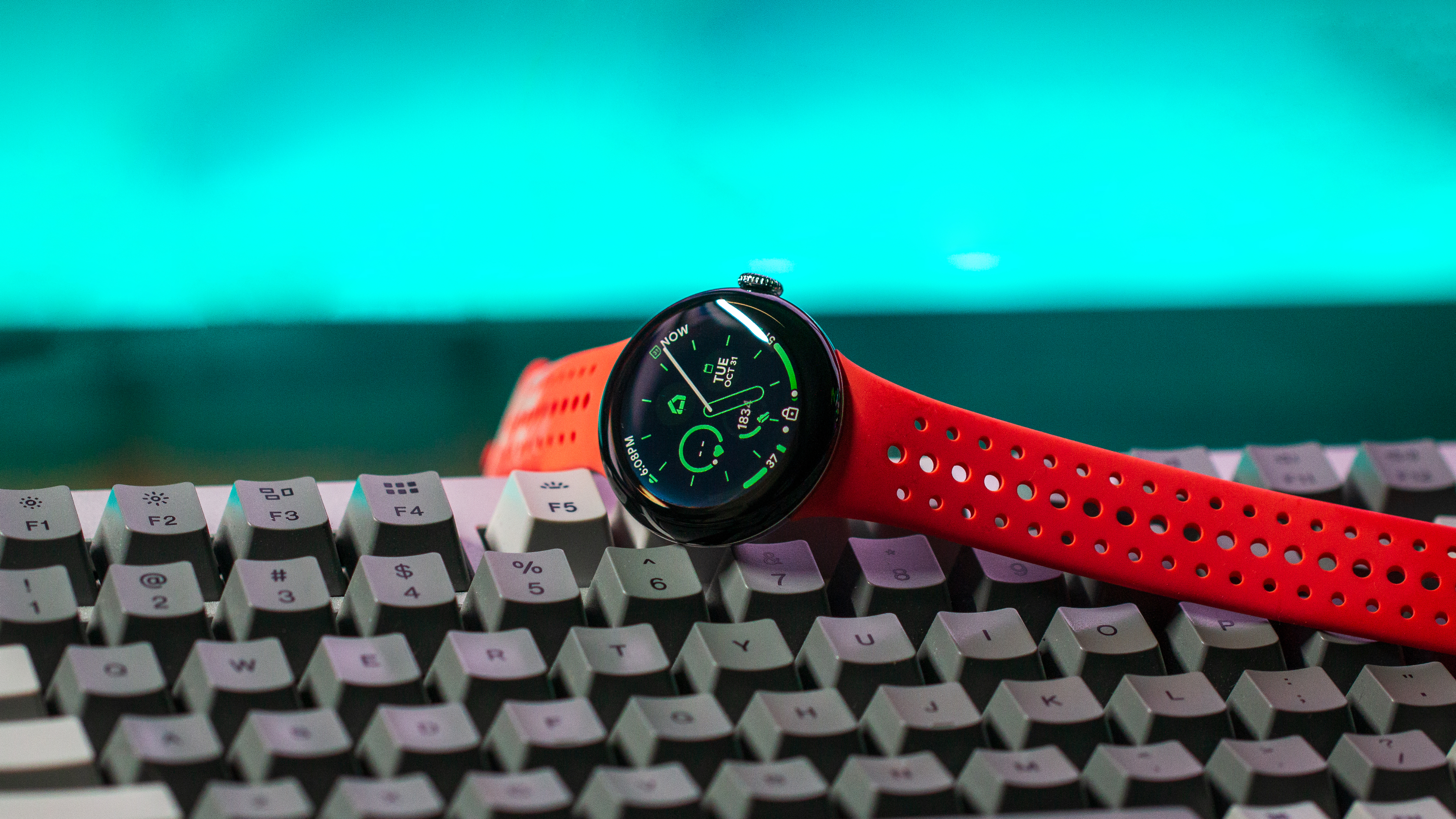
The Pixel Watch 2 ships in four colors (though some aren't available depending on where you live):
- Matte Black Aluminum Case / Obsidian Active Band
- Polished Silver Aluminum Case / Bay Active Band
- Polished Silver Aluminum Case / Porcelain Active Band
- Champagne Gold Aluminum Case / Hazel Active Band
Google says that the Pixel Watch 2 is made of "100% recycled aluminum," a switch from the "80% stainless steel" of the original Pixel Watch. While some may prefer steel for its high-class look, the new model is 5g lighter despite sporting the same dimensions and new sensors, so you may prefer this trade-off for better comfort.
Like the original Pixel Watch, the Pixel Watch 2 has a haptic crown and a separate side button for navigation and shortcuts, respectively. The crown was one of our favorite elements of the first-gen model, with its "subtle and satisfying" bumps that give you a tactile grip and a feel for how far you're turning it. We're glad to see it return.
Although the Pixel Watch uses a proprietary attachment mechanism, all of your Pixel Watch 1 bands will transfer to the newer model. Attaching or detaching a band is as simple as pushing a button and sliding the band out or in.
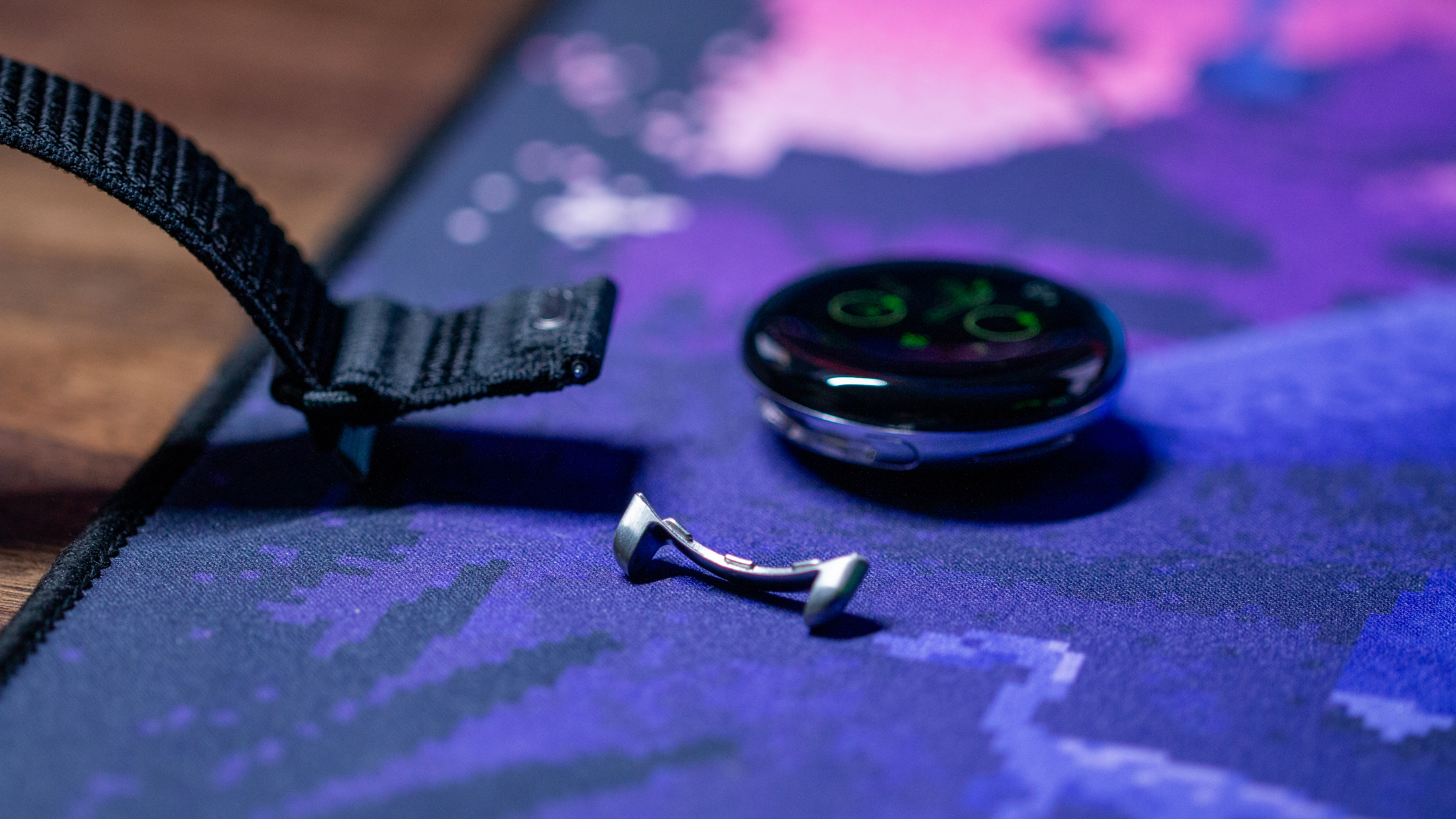
With the standard Active band, the Small and Large variants fit wrist sizes of 130–175mm or 165–210mm, respectively. Other official bands have one-size-fits-all designs or wider wrist sizes, if yours is especially petite or wide.
As for the display, things are mostly unchanged from last year. Like before, you get a 1.2-inch AMOLED display with 320 pixels per inch and 1,000 nits of brightness. It has Gorilla Glass 5 scratch protection and DCI-P3 color range, though Google doesn't specify a percentage. The only key difference is that Google says it has a thinner domed cover glass than before.
If you're someone who prefers a larger display size, you'll have to go with a Galaxy Watch 6 or another Android watch option. Although we really like Google's rounded edge-to-edge design, the Pixel Watch 2 does bring back a fairly large display border when other brands have cut down on that wasted space to maximize room for text and apps.
Google Pixel Watch 2: Hardware & sensors
| Google Pixel Watch 2 | Specifications |
|---|---|
| Dimensions | 41 x 41 x 12.3mm |
| Weight (w/out strap) | 31g |
| Display | 1.2-inch (384 x 384) AMOLED touchscreen; 1,000 nits |
| Processor | Qualcomm Snapdragon Wear 5100; Cortex M33 co-processor |
| Memory | 2GB |
| Storage | 32GB |
| Durability | Corning Gorilla Glass 5; 5ATM; IP68 |
| Battery | 306mAh; 24 hours with AOD |
| Charging | USB-C proprietary cable; 30 minutes to 50%; 43 minutes to 80%; 75 minutes to 100% |
| Connectivity | Bluetooth 5.0; Wi-Fi 802.11 b/g/n 2.4GHz; NFC; 4G LTE and UMTS (optional) |
| Operating system | Wear OS 4; Android 9+ phone required |
| Sensors | Accelerometer, altimeter, ambient light, cEDA, compass, ECG, gyroscope, magnetometer, optical heart rate, skin temperature, SpO2 |
| GPS | GPS L1, GLONASS, BeiDou, Galileo, QZSS |
| Audio | Built-in microphone and speaker |
The Pixel Watch 2 matches the Pixel Watch in its size, memory, storage, display, and connectivity standards.
What's new? For starters, it trades out the old Exynos 9110 chip — found in the original Samsung Galaxy Watch — for a new Snapdragon Wear 5100 chip also used by the excellent TicWatch Pro 5. Specifically, Mobvoi uses the 5100+ with a Qualcomm coprocessor, while Google uses its own Cortex co-processor instead.
Not only does this updated chip deliver faster performance, but it also makes the Pixel Watch 2 more efficient. The Pixel Watch and Watch 2 share a 5ATM water resistance rating, but only the latter has an official IP68 rating for dust and water resistance.
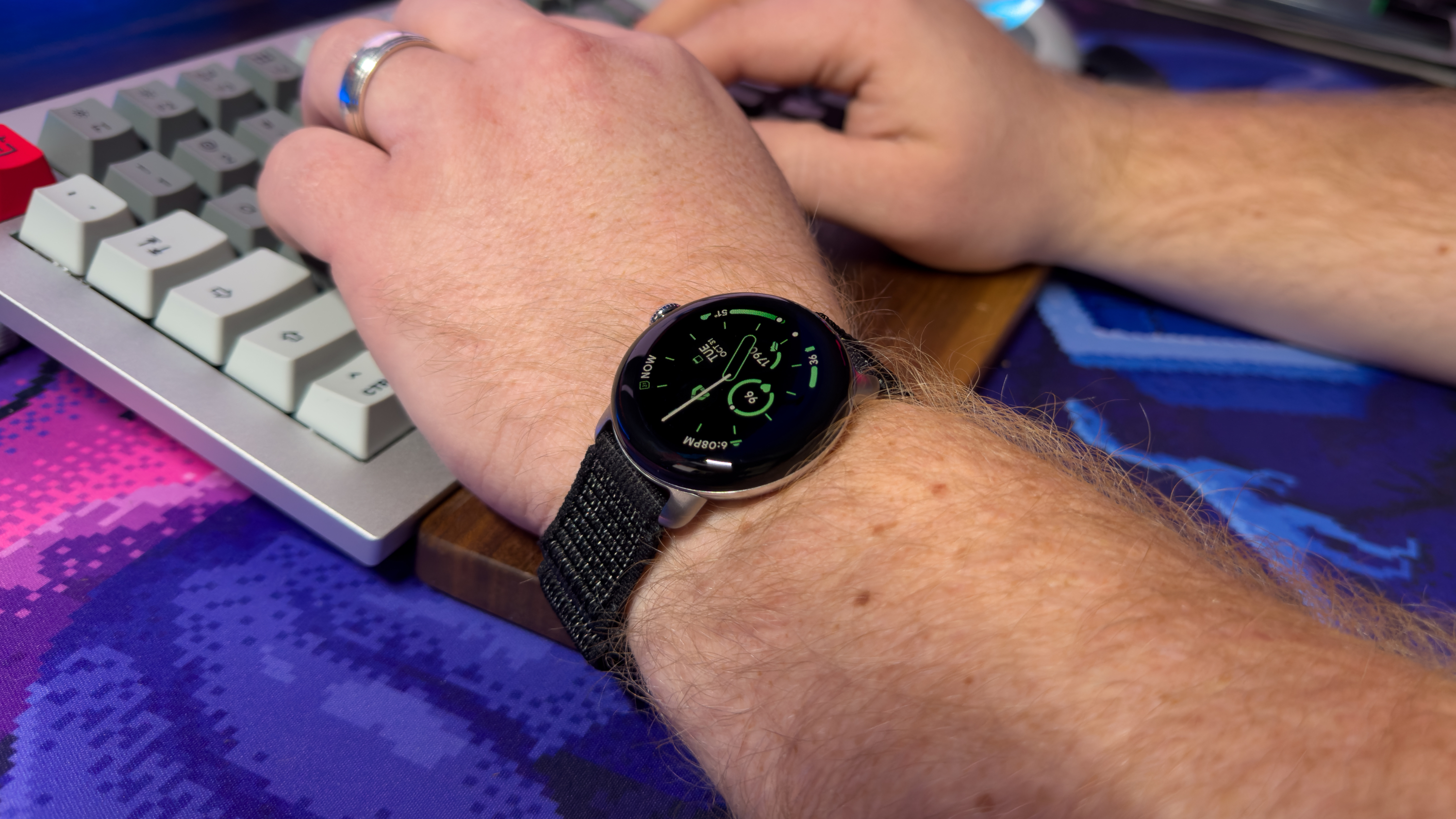
Google redesigned its optical heart rate monitor so that it can use multiple LEDs and photodiodes to measure your pulse from different angles while sticking to battery-saving single LED mode outside of workouts. The key here is that the Pixel Watch 2 is better at registering your heart rate during fast-paced workouts, whereas the Pixel Watch 1 might struggle to properly track them.
In terms of new sensors, the Pixel Watch 2 steals some tricks from the Fitbit Sense 2. It has an electrical sensor to measure skin conductance for body response tracking, or cEDA; in plainer terms, it continuously tracks your stress levels for Fitbit to analyze. It also adds a skin temperature sensor to measure your health and sleep quality at night and separate electrical sensors for electrocardiograms (ECG).
Rounding out the list, the Pixel Watch 2 adds a magnetometer and a barometer separate from its altimeter. It also adds QZSS tracking for the first time, likely as a perk for Japanese buyers.
Google Pixel Watch 2: Battery life and charging
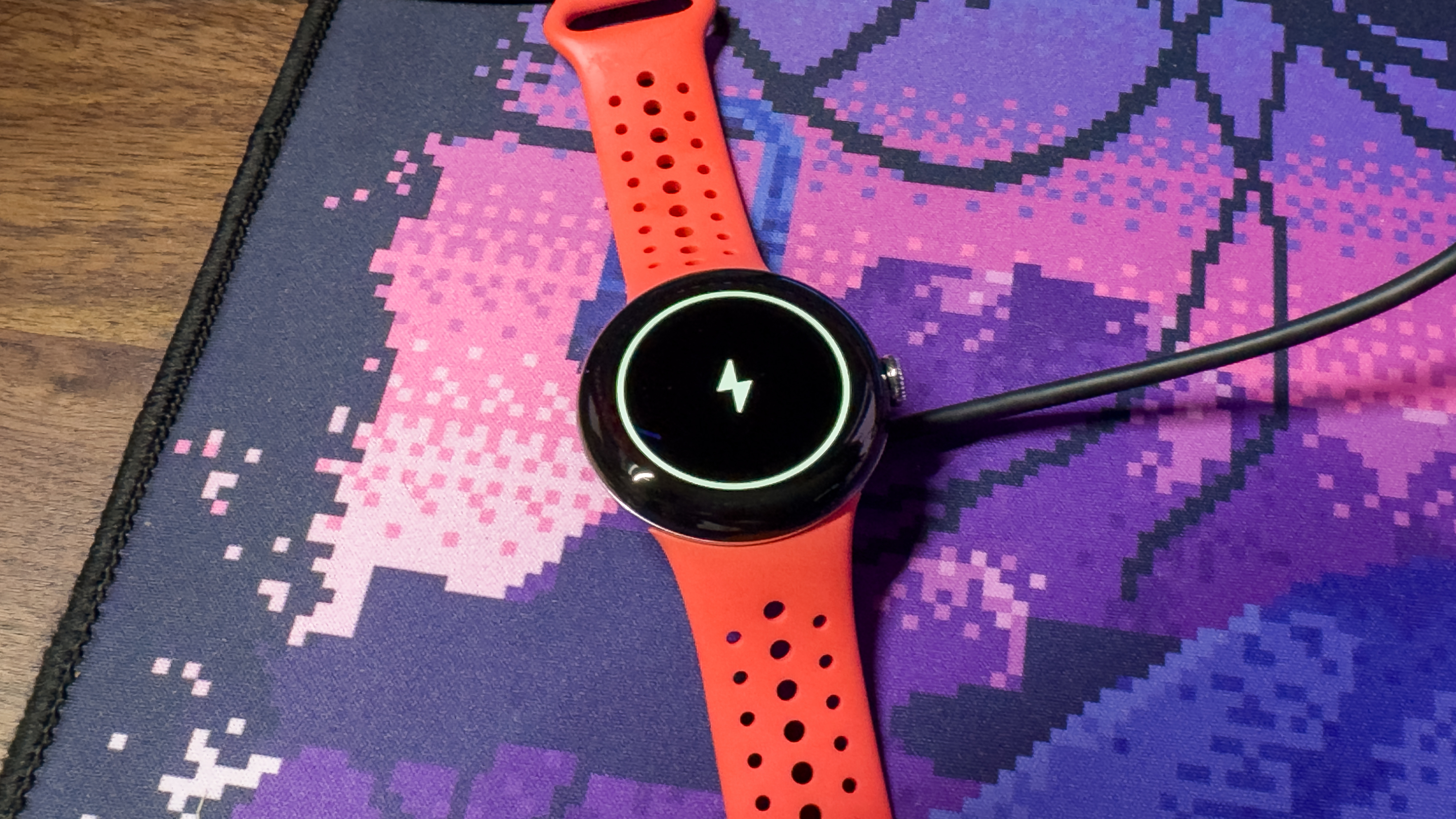
Because it retains the same design as the original Pixel Watch, don't expect a drastic difference in terms of battery life. This is apparent as last year's model packs a 294mAh cell, while the Pixel Watch 2 gets a miniscule bump up to 306mAh. Google even states that both smartwatches are rated for up to 24 hours, albeit with a bit of an asterisk.
Out of the box, the Pixel Watch 2 has its Always-on Display enabled by default, while still managing to meet the claim of 24-hour battery life. Meanwhile, the original Pixel Watch does not come with the AOD enabled, meaning that you'll be able to squeeze some extra juice out of the Watch 2 if you turn this feature off.
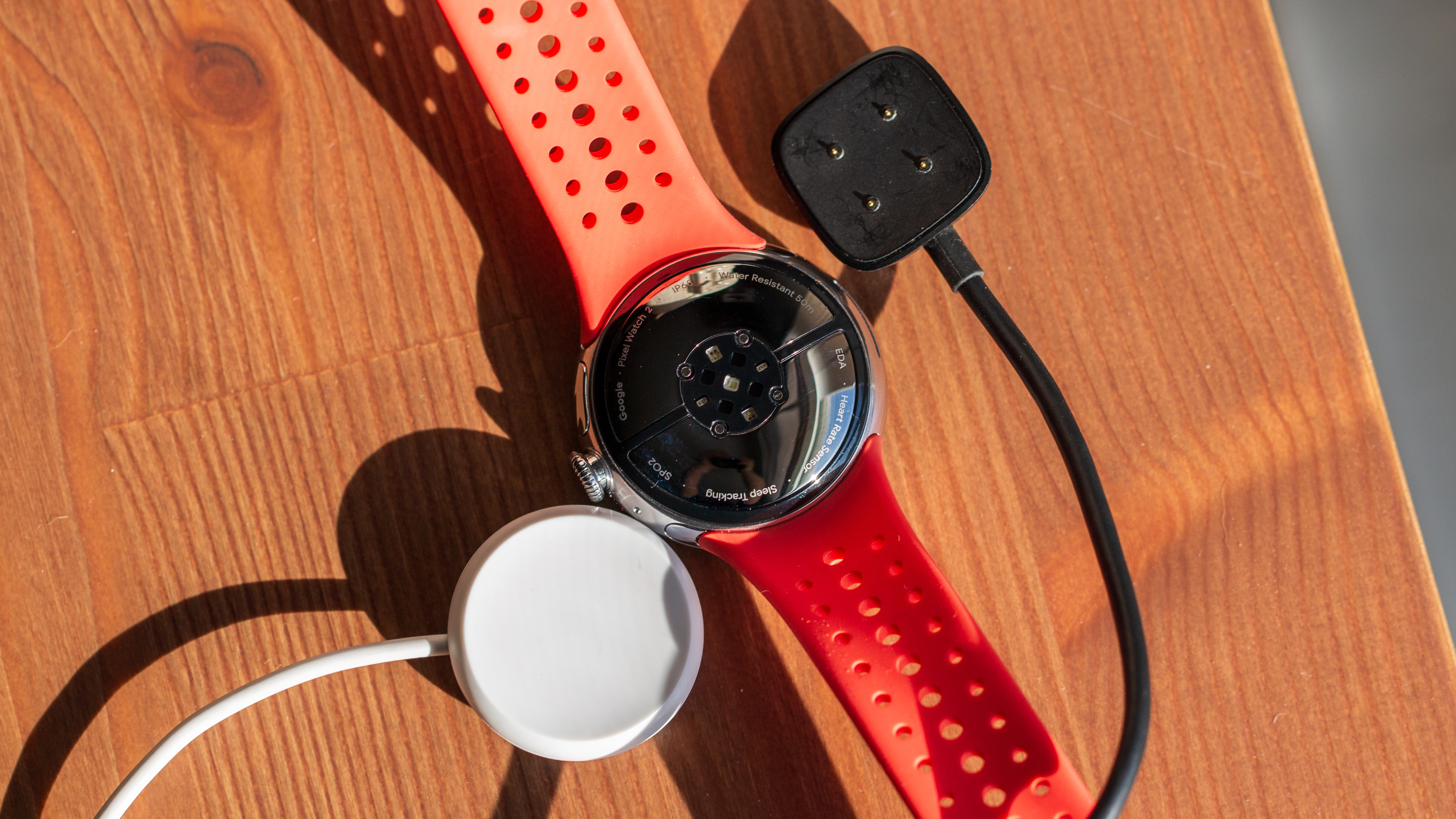
Where these two wearables differ greatly is in how they are charged, as Google ditched the wireless charging puck that was introduced with the Pixel Watch. Instead, the Pixel Watch 2 relies on an array of four pogo pins, removing any hopes of using reverse wireless charging from your phone if you need to top it off.
In fact, it's possible to use the same charger from something like the Fitbit Sense 2 or Versa 4 to recharge the Pixel Watch 2. Google stated that this was done in an effort to improve charging speeds while reducing the amount of heat.
Plus, charging the Pixel Watch 2 is now slightly faster: it takes 43 minutes instead of 55 to hit 80%, or 75 minutes instead of 80 to hit 100%. And it's worth noting that even when using a Fitbit charger, the Pixel Watch 2 is able to meet the quoted charging speeds.
Google Pixel Watch 2: New features
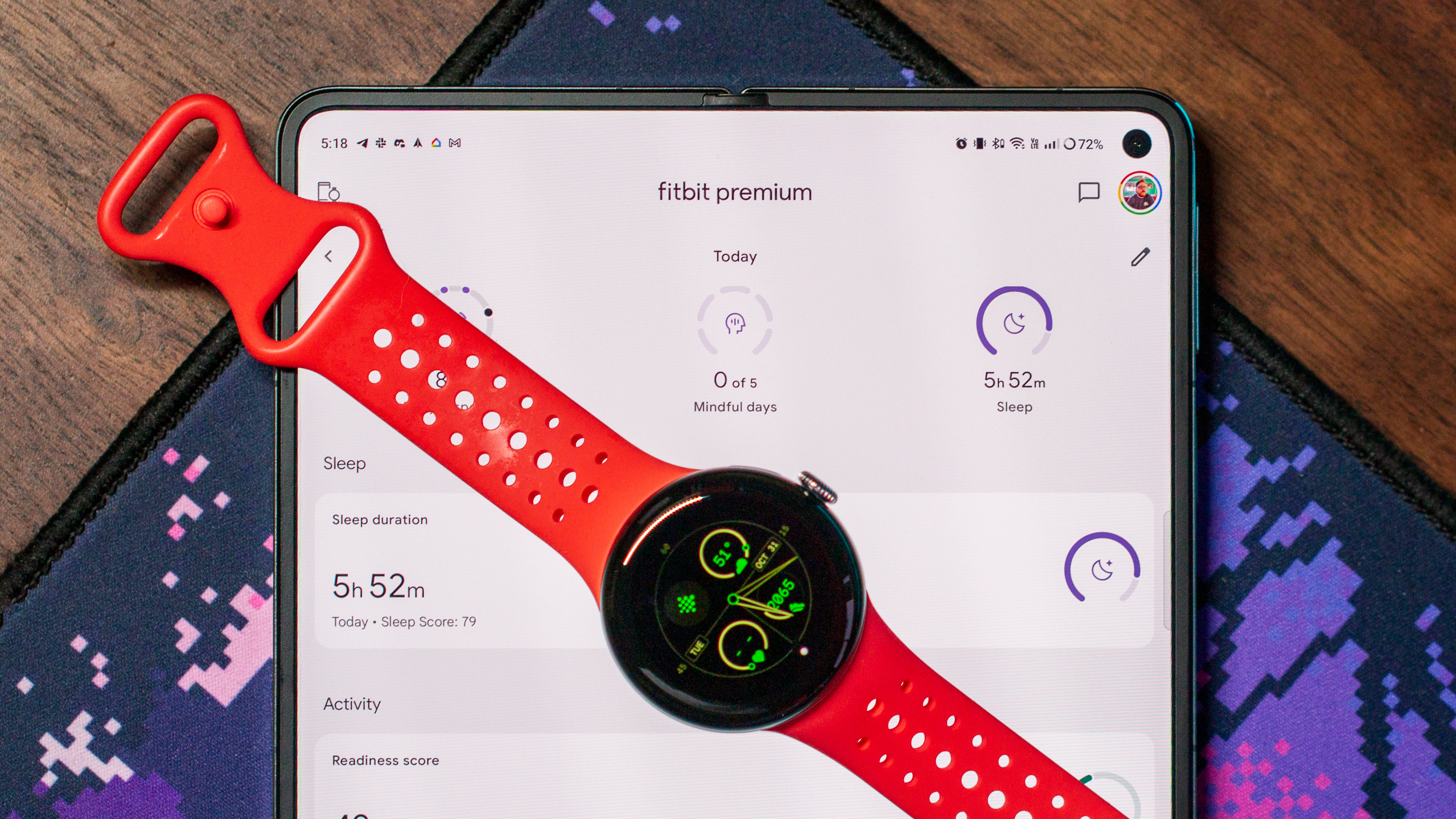
Armed with Wear OS 4, the Pixel Watch 2 will have plenty of new apps and tools, such as the new Gmail and Google Calendar apps. It'll use improved text-to-speech to make dictating emails or creating calendar events easier without typing on a tiny screen.
Google Assistant has also gotten smarter with this iteration, allowing you to ask questions about your Fitbit health stats and receive contextual answers. Of course, you'll need a Fitbit Premium account to make the most of this.
Wear OS 4 also enables backup and restore capabilities, something that has only been available on Galaxy Watches up until now. Plus, you'll get an expedited Watch Unlock tool to access your Android phone more quickly by bypassing your passcode.
In terms of the Pixel Watch 2 specifically, it's getting new safety features like Safety Check, which checks in with you after a prearranged time to see if you're all right; if you don't respond, the watch will automatically share your real-time location, medical info, and context to your emergency contacts or emergency services.
If you buy the 4G LTE Pixel Watch 2 and subscribe to Fitbit Premium, then you can use Safety Signal: it lets you make phone-free emergency calls or texts without having subscribed to a service plan.
Although Fitbit Premium was available with the last generation, you can more properly get a sense of your Daily Readiness and overall health because of the new multi-path HRM, ECG, cEDA, and skin temperature sensors, properly judging your workout effort, heart health, and sleep recovery.
You also have access to automatic workout detection, personalized heart rate zones, and Pace Training to keep you on track with a specific time and effort in mind.
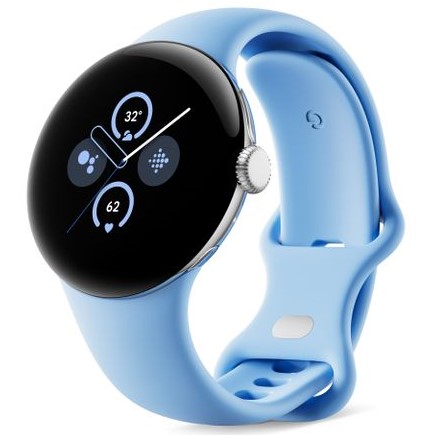
The Pixel Watch 2 looks a lot like the original Pixel Watch, but you'll find plenty of changes underneath the surface in terms of performance, battery, apps, and more.

Michael is Android Central's resident expert on wearables and fitness. Before joining Android Central, he freelanced for years at Techradar, Wareable, Windows Central, and Digital Trends. Channeling his love of running, he established himself as an expert on fitness watches, testing and reviewing models from Garmin, Fitbit, Samsung, Apple, COROS, Polar, Amazfit, Suunto, and more.
- Andrew MyrickSenior Editor — Smartphones (North America), Chromebooks & Tablets
- Derrek LeeManaging Editor
